 Technology
Technology  Technology
Technology  Humans
Humans 10 Everyday Human Behaviors That Are Actually Survival Instincts
 Animals
Animals 10 Animals That Humiliated and Harmed Historical Leaders
 History
History 10 Most Influential Protests in Modern History
 Creepy
Creepy 10 More Representations of Death from Myth, Legend, and Folktale
 Technology
Technology 10 Scientific Breakthroughs of 2025 That’ll Change Everything
 Our World
Our World 10 Ways Icelandic Culture Makes Other Countries Look Boring
 Misconceptions
Misconceptions 10 Common Misconceptions About the Victorian Era
 Mysteries
Mysteries 10 Strange Unexplained Mysteries of 2025
 Miscellaneous
Miscellaneous 10 of History’s Most Bell-Ringing Finishing Moves
 Technology
Technology Top 10 Everyday Tech Buzzwords That Hide a Darker Past
 Humans
Humans 10 Everyday Human Behaviors That Are Actually Survival Instincts
 Animals
Animals 10 Animals That Humiliated and Harmed Historical Leaders
Who's Behind Listverse?

Jamie Frater
Head Editor
Jamie founded Listverse due to an insatiable desire to share fascinating, obscure, and bizarre facts. He has been a guest speaker on numerous national radio and television stations and is a five time published author.
More About Us History
History 10 Most Influential Protests in Modern History
 Creepy
Creepy 10 More Representations of Death from Myth, Legend, and Folktale
 Technology
Technology 10 Scientific Breakthroughs of 2025 That’ll Change Everything
 Our World
Our World 10 Ways Icelandic Culture Makes Other Countries Look Boring
 Misconceptions
Misconceptions 10 Common Misconceptions About the Victorian Era
 Mysteries
Mysteries 10 Strange Unexplained Mysteries of 2025
 Miscellaneous
Miscellaneous 10 of History’s Most Bell-Ringing Finishing Moves
10 Legends Of Aquatic Humanoid Creatures
Everyone has heard of mermaids, but they aren’t the only aquatic humanoid creature around. For centuries, legends from around the world have told of other watery beasts that resemble human beings. Indeed, such stories seem to have been a common thread across various cultures.
These ten creatures aren’t cute enough to end up as the star of their own Disney movie, but that doesn’t mean they’re any less interesting. Most are decidedly more nefarious, while a few are benevolent. One or two may even have had some basis in reality.
10 Adaro
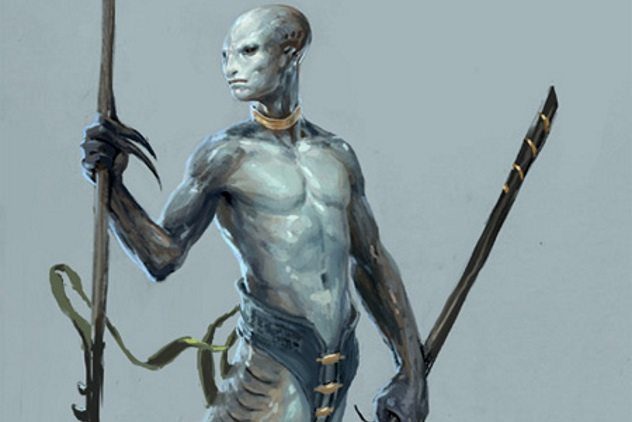
The ocean can be an unforgiving place. If sailors were gone for too long, they would sometimes go insane. Children who disobeyed their parents would slip into the water without ever struggling or splashing before they drowned. It was almost as if something had captured their will to live. In the Solomon Islands, they blamed this on a creature called the adaro. This creature’s face and upper body looked like a man without hair on his head and black eyes. It was all gray with a shark-like tail and breathed underwater through gills behind its ears.
According to legend, the adaro would wait for people to fall into the water. If someone had sinned a lot, the adaro would suck out all of the good parts of his personality, or “shade,” only leaving behind the darkest side of humanity. Christians in the Solomon Islands transformed this traditional legend to fit in with the Bible, saying that the adaro are really fallen angels or demons.[1]
9 Rusalki
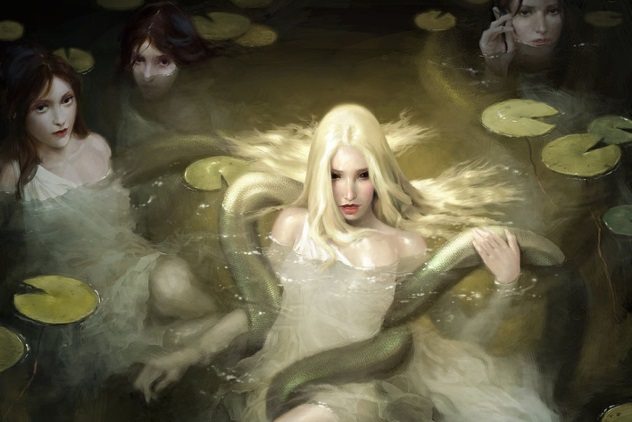
According to Russian mythology, the rusalki (singular: rusalka) were beautiful, young, naked women who emerged from the water in order to spread moisture to the fields and give life to the Earth. These were not mermaids but female spirits who were once living human beings. In early legends, it was told that these were the ghosts of women who drowned from committing suicide due to grief from the death of a child or husband. Rusalki were once depicted as beautiful, helpful female spirits who would sometimes even sing as they worked, giggle, and brush their hair by the edge of the water.
In later years, stories and artwork about rusalki transformed them into zombies emerging from their watery graves. The later legends focused more on women who were murdered and dumped in lakes and rivers. The zombie rusalki would emerge from the water to walk on land and take revenge on the men who killed them.[2]
8 Yacuruna
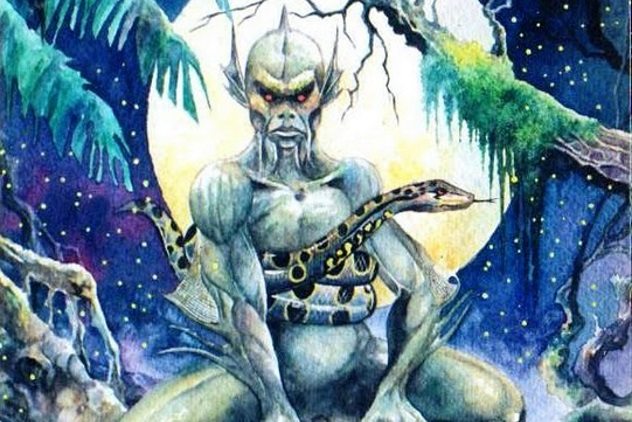
The indigenous people living in the Amazon rain forest believed in aquatic creatures called yacuruna. These were people that lived in underwater cities which were like reflections of life on land, so everything was upside down. Their palaces were made of crystal, and they were decorated with shining pearls and fish scales. The yacuruna rode on the backs of snakes, crocodiles, and turtles for transportation.
A yacuruna resembled a human, except that the head, hands, and feet were on backward. Others claimed that these humanoids simply had webbed hands, feet, and green skin. Legend said that if a human was ever captured by a yacuruna, they would begin to transform into one, starting with their eyes rolling backward. A shaman would have to reverse the curse before it was too late. Some believed that the yacuruna were an advanced civilization and that they were the source of a shaman’s medical knowledge.
In one story, a man named Don Juan Flores Salazar witnessed his little sister drown when they were children. Later in life, he had a vision of her an adult, standing by the water’s edge. She told him that she was alive and had married a yacuruna man. She returned to give him knowledge of healing. Salazar went on to have a career as a shaman.[3]
7 Finfolk
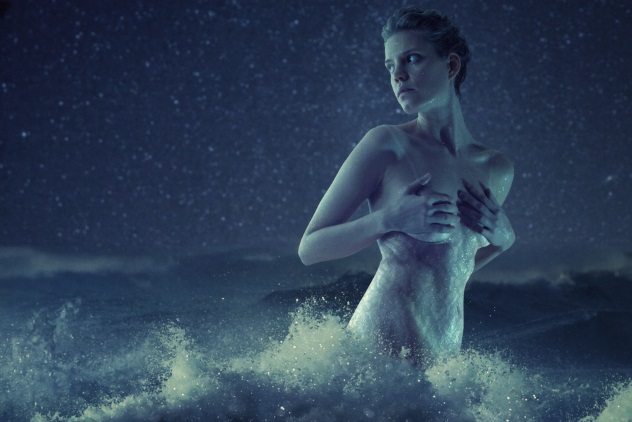
In Scotland and Ireland, stories of the finfolk were a big part of local folklore. During the winter, the finfolk lived in a city at the bottom of the ocean called Finfolkaheem. In the summer, they lived on an island called Hildaland, which could appear and disappear at will, making it impossible for humans to find.
It was believed that the finfolk could take on the form of a beautiful men and women in order to lure humans into the water. They were shape-shifters who could transform from full fish to full human or somewhere in between, like a mermaid. It was believed that the finfolk wanted to have sex with humans because it was like their elixir for a long life. Whenever a boat never returned home from a voyage or someone drowned, it was always blamed on the finfolk. After the rise of Christianity, priests began to claim that so long as a village practiced the Bible and spoke the world of God, finfolk could not step on dry land.[4]
6 Umibozu
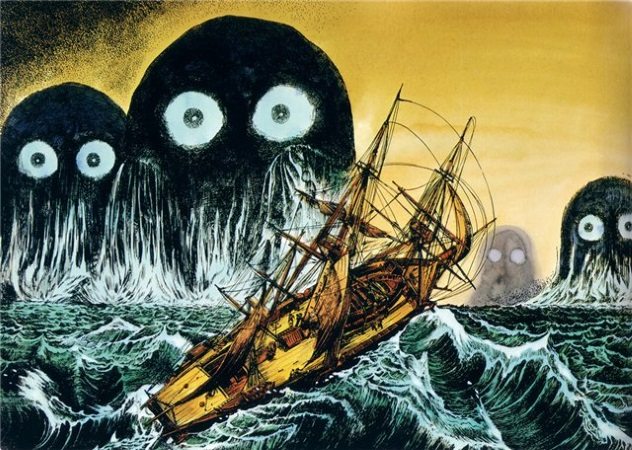
Sailing at sea during the night can be frightening experience, even when conditions are calm. During a storm, large waves can easily capsize a boat. According to Japanese legend, sailors would sometimes glance over calm waters at night and see a giant black shadow in the shape of a bald man. They called this the umibozu, which literally translates to “sea monk.” They took this as an omen that even though the waters looked calm at the moment, there was a storm coming, and it was best not to sail. Other accounts of the umibozu tell stories of ships on calm seas that were suddenly dragged down, and they witnessed this black figure from the shore.
Modern theorists believe that the legend might have originated from the real-life phenomenon of rogue waves. Sometimes, the wind can create a giant wave out of nowhere, even if conditions appear calm. At night, from a distance, this can resemble the outline of a person. This only happens when a storm is on its way, so this story is actually true.[5]
5 Monk Fish And Bishop Fish
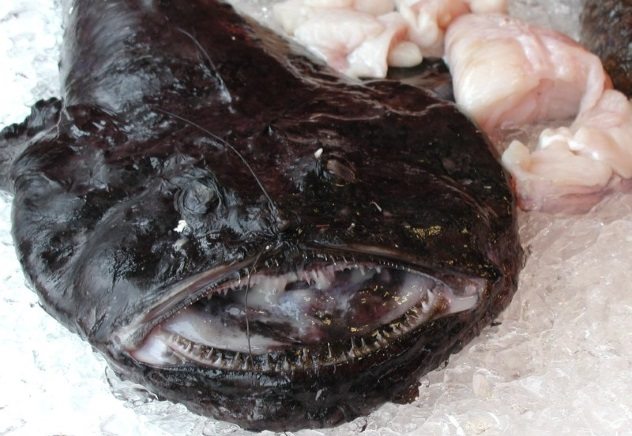
In Denmark and Poland, sailors and fisherman would report sightings of a fish with a human face. The top of its head was shaped like a bishop’s hat, and its body looked like it was wearing a cloak. Most of the accounts date back to the 1500s, when there was so much still unknown of marine biology that even stories of large whales were considered to be folklore. The creatures known as “monk fish” and “bishop fish” both have very similar features.
According to one story, fishermen captured a monk fish, and they were so convinced that it was a holy man of the sea that they took it to a church, hoping to get some reaction out of it. Of course, it never spoke a word. The monk fish became a cryptozoological creature, and illustrations made it out to be very humanlike.[6]
In modern times, there is a genus of fish, Lophius, which is still nicknamed “monkfish.” Monkfish have large mouths with a pink inside that resembles a human tongue. They also have eyes in the front of their heads, similar to a human face.
4 The Ipupiara
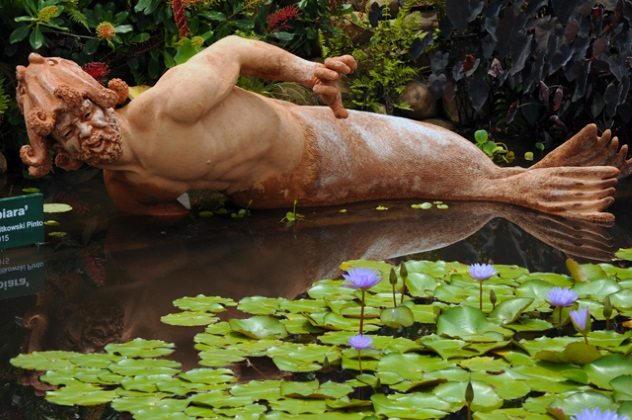
The Ipupiara is legendary a South American sea monster that was covered in hair and had a very bushy mustache. It was said to kill sailors off the coast of Brazil by choking them to death with its hands. Then, it would eat their eyeballs as well as the tips of their fingers, toes, and even genitals. During the 1500s, explorers claimed to have killed the Ipupiara by thrusting a sword into its belly. They sold the corpse to a rich Danish physician named Thomas Bartholin. He examined the body and confirmed that the creature had the head and torso of a very hairy man, but the bottom extremities were like a fish. The corpse was put on display in his cabinet of curiosities.[7]
Modern-day theorists believe that the Ipupiara may have been a man with a deformity called sirenomelia, where a person’s legs are fused together to resemble a fishtail. At that time, it was not uncommon for parents of disabled children to leave them for dead. It’s possible that the child had become feral. Or, it was all an elaborate hoax. Note that babies with sirenomelia rarely survive more than a day or two.
3 Vodyanoy
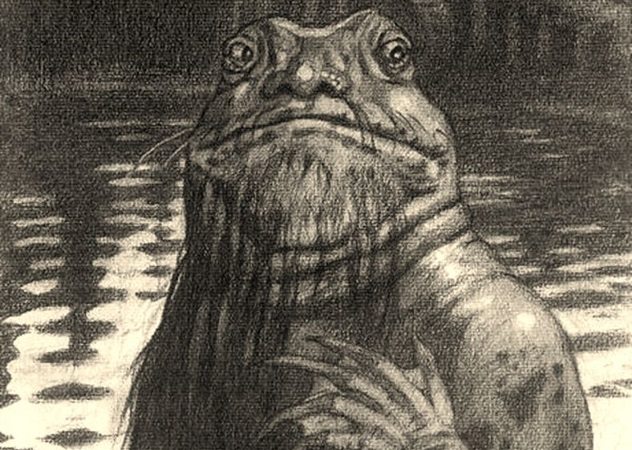
In Slavic legends, Vodyanoy was the guardian spirit of water. He is described as a wise old man who has control over every aquatic creature. If humans treated the water with respect, they would be rewarded with fish to eat and valuable pearls. Vodyanoy rode around a “water horse” that was actually a catfish.
In illustrations of Vodyanoy, his body is humanlike with webbed hands, but he has the head of a frog with a human nose. His beard drips with algae and slime. Stories say that he could shape-shift into a man if he wanted to. In fact, he was said to enjoy human food so much that ancient people gave him meals as an offering. As a shape-shifter, he could leave the water in order to satisfy his cravings. However, anyone could pick Vodyanoy out of a crowd of people because his left butt cheek was constantly dripping water.[8]
2 Oannes
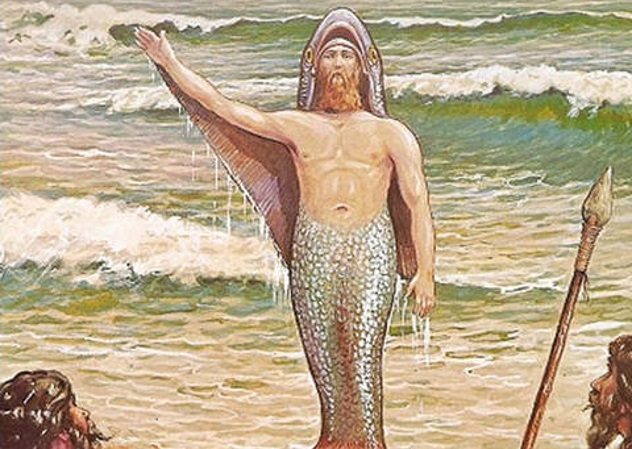
In ancient Babylonian mythology, Oannes was an amphibious god that was like a merman with a long beard, except that he wore a fish hood on his head. In fact, it looked like a naked guy hollowed out a giant fish carcass, climbed inside, and decided to hop around land while standing upright. In other illustrations, he even has human feet sticking out of the bottom, which makes him look less like a mythical creature and more like a crazy person.
According to the ancient legend, mankind needed to rebuild civilization, so they were looking to the gods for guidance. Oannes emerged from the water to explain the arts and sciences to people, and they listened intently to his advice. At the end of the day, he would jump back in the water and swim away. In the Hebrew version of this story, Noah built the ark after the Great Flood, and God taught him how to rebuild civilization.[9]
1 The Man Fish
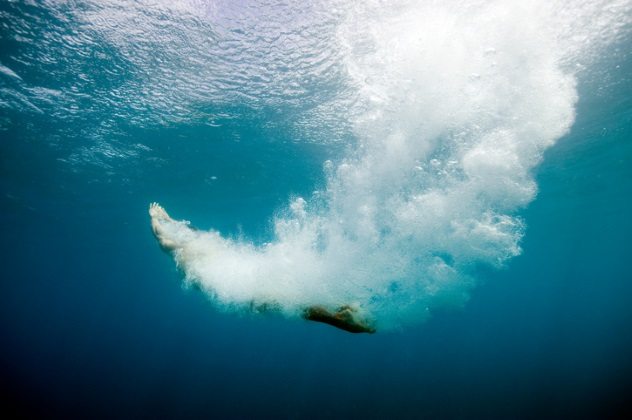
In 1679, sailors off the coast of Spain pulled a naked man out of the water. They scrambled to give him food and wine and asked him if he was in a shipwreck, but he could not speak. They brought him on land, where he immediately became sick, so he jumped back into the sea.
In another version of this story, the “fish man” was a teenage boy who was ordered to dive for treasure in the ocean and never emerged, so everyone assumed he drowned. Five years later, sailors rescued him from the sea. The people in the town recognized him, so they brought him home to his mother’s house. He had such a difficult time adjusting back to life on land that he left to live in the water again.
Writers at the time used this story to theorize that humans were able to adapt to any environment, even if it meant growing gills to live in the water.[10] A statue was created to look like the fish man in the town of Lierganes, Cantabria, Spain. Of course, in today’s world, these stories are considered to be fairy tales.
Shannon Quinn is a writer and entrepreneur from the Philadelphia area.
Read about more creature legends from around the world on 10 Monster Legends From Around The World and 10 Wicked Creatures From Native American Folklore.








